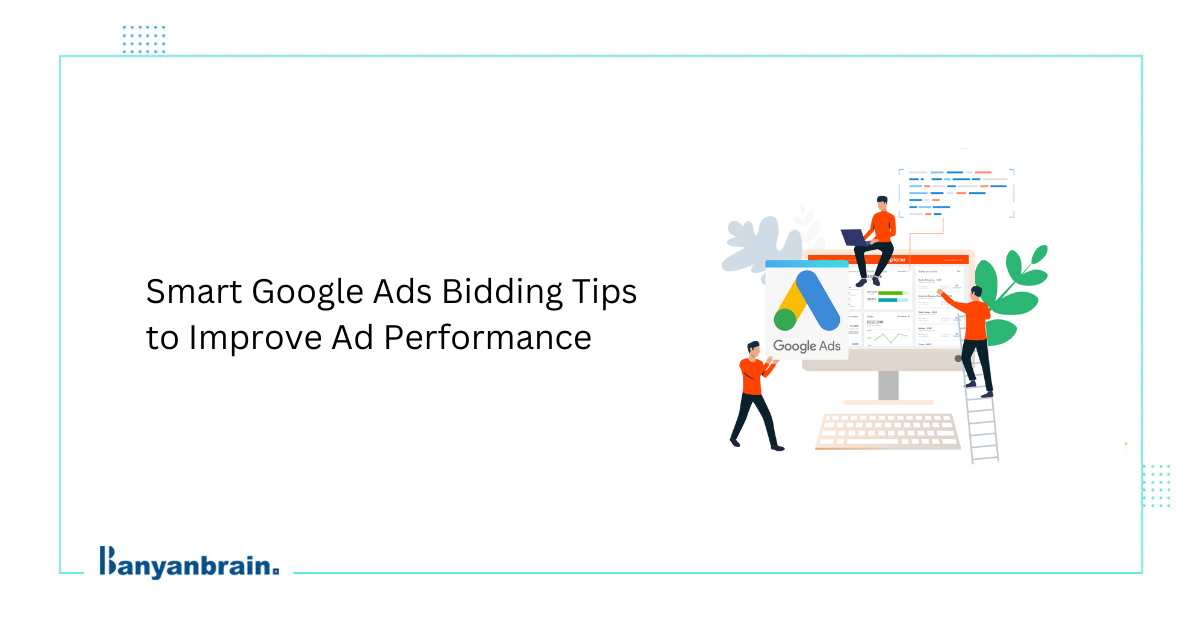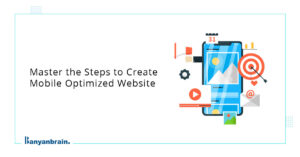Choosing the right Google Ads bid strategy is essential for maximizing the return on investment in this competitive digital advertising landscape. The use of artificial learning and automated bidding strategies helps improve digital marketing campaign performance and also simplifies and streamlines the management process. Google Ads offers various bidding strategies tailored to your specific needs, and you can contact a leading digital marketing agency for better results. This variety of bidding options offers high control over ad placements and expenditure.
This comprehensive blog will discuss the factors that you must consider when choosing the right Google Ads bid strategy to maximize the return on investment, ultimately leading to the financial and digital development of the business.
What is Google Ads bid strategy?
Google Ads’ bid strategy helps determine how you want to bid on ads to make them appear on the pages where audiences can reach them easily. Basically, with the help of this bid strategy, you can pay based on several Google impressions, that is, the number of times your ad is shown that you get on YouTube or the Google display network.
These automatic bidding strategies use machine learning and artificial intelligence to increase conversions and conversion quality. Moreover, different types of bidding strategies can be customized to your requirements.
Types of Google Ads Bidding
Google Ads’ bid strategy helps advertisers achieve their goals. Different types of Google ad bids use machine learning for bid optimization and better performance. Here are the main types of Google bid strategies:
Manual bidding: These Google AdWords biddings provide the highest level of authority for Google ads campaigns. This is most suitable for advertisers who want to manage their bids and actively monitor the campaign’s success. Here are two types of manual bidding:
- Manual cost-per-click means advertisers set their maximum bids for clicks on their ads. This offers full control over the individual Google keyword bids and needs continuous performance optimization management.
- Enhanced cost-per-click is a semi-automated option that helps adjust manual bids based on conversion. It helps in flexibility while allowing advertisers to control their bids.
Advantages of manual bidding:
- It provides you the opportunity to improve and adjust bids on the basis of analysis.
- This strategy offers complete control over the max CPC or individual groups.
Disadvantages of manual bidding:
- This bidding on Google ads strategy needs a good amount of time investment for monitoring and optimization.
- The main disadvantage of these bids is the lack of use of machine learning and automation.
Enhanced CPC bidding: ECPC, as a Google Ads bid strategy, merges the characteristics of manual bidding and automation in Google Ads to get the best results from your efforts. These bindings can change the bids during the auctions to elevate the chances of conversion.
Advantages of enhanced CPC ad bidding strategy:
- This helps retain some amount of control over the maximum costs-per-click you set.
- It also assists in enhancing the bid performance with respect to conversions with Google ads machine learning.
Disadvantages of enhanced CPC bidding:
- This offers less authority over the bids than manual bids.
- Bidding adjustments can be costly unless you have set a limit on them.
Target ROAS bidding: The Google search ads’ bidding target return on ad spend helps optimize the bids to achieve the targeted ad spend return you specified. The advertisers with main focus on profitability and revenue. It works best for e-commerce businesses with the appropriate tracing of the conversion values.
Advantages of target ROAS bidding:
- It prioritizes maximizing the revenue as per your desired return.
- Automated bidding for Google ads optimization helps achieve ROAS targets by adjusting the bids according to business aims to get higher returns.
Disadvantages of ROAS bidding:
- A fluff-fledged system is needed for accurate tracking of conversion.
- You will have limited authority over ad placement or max keyword bidding Google ads CPC.
Target CPA bidding: Target CPA (Cost Per Action) Google Ads bid strategy aims to get as many conversions as possible at the target cost per action set by the clients. Google ads alter each and every bid automatically in each auction to get higher conversion rates. However, the advertisers are focused on optimizing the ad spend with respect to the conversion performance.
Advantages of Target CPA Bidding:
- You can control the costs by deciding on a specific price you are willing to pay for each conversion.
- Set a targeted ROAS to achieve as per the historical performance, making the target achievable.
Disadvantages of Target CPA Bidding:
- You have less control over the maximum cost per click and ad placement.
- Therefore, campaigns that do not prioritize conversions can’t use it.
Maximize clicks bidding: This Google smart bidding strategy helps drive maximum traffic to your website within the specified budget. Certainly, this will be ideal for advertisers who want to increase website traffic without managing individual bids.
Advantages of maximizing clicks bidding:
- This strategy is easy to adjust and set up, making it a simpler approach for setting up the bids.
- It also promotes brand visibility and lead generation by utilizing the full potential of your budget.
Disadvantages of maximizing clicks bidding:
- There is less focus on conversion value and performance.
- Furthermore, this bidding lacks control over achieving maximum cost per click and ad placements.
Maximize the conversions bidding: These digital marketing strategies use Google machine algorithms to get the maximum conversions possible. It alters the bids as per the conversion rates. Advertisers focus on high conversion volume while using the full potential of your ad spending, and they can get better results with this Google Ads bid strategy.
Advantages of maximizing the conversions bidding:
- Google ads’ automated bidding strategies’ adjustments to maximize conversions are the biggest advantage.
- It also helps increase the conversion volumes and profitability of your business.
Disadvantages of maximizing the conversions bidding:
- This optimized ad content leads to inconsistent costs as you do not have direct control over the bids.
- Lastly, it depends on an effective budget management system that prevents overspending.
What are the campaign goals?
Consider your campaign objectives before choosing the right Google Ads bid strategy. Most companies searching for a bidding strategy have the following goals:
- Bring actions to the website: If you want visitors to take any action on the website, like purchasing an item or signing up for a newsletter, you need to prioritize conversions. Altogether, , smart bidding would be a great option as automated bidding strategies automatically set bids to enhance conversions according to your budget.
- Boost conversions: Now, if your business aims to maximize the conversion value of Google ads that imply the conversion of potential customers into buying ones, you must select an impressions strategy. This particular approach focuses on enhancing brand recognition, showing your ad, and connecting to customers.
- Enhance website traffic: Increasing traffic through this cost-per-click strategy can be the objective of the businesses. This smart bidding strategy, Google Ads, also lets you set the maximum amount you can pay for every ad click. In brief, it helps to drive traffic along with a controlled budget.
How do you choose the right bidding strategy?
As a matter of fact, selecting the right Google ads bid strategy depends on your budget and objective. Let’s delve into the quick guide to selecting the right bid strategy:
- For traffic: To increase the website traffic, you can select manual CPC or maximize clicks. Consequently, this will help you increase website traffic with some control or authority.
- For revenue: To increase the revenue you earn by increasing your business’s sales, targeting ROAS (Rate on Ad Spend) and maximizing conversion rates will be the two best strategies for this purpose.
- For brand awareness: To make people aware of your brand strategy and initiate brand bidding Google ads, you must use a target impression-share strategy. It will ensure that your ads are visible to as many users as possible.
- For conversions: If the primary goal for your business is conversion, then you can go for enhanced CPC, targeted CPC, and Google ads to maximize conversions. These strategies will increase the ratio of buying customers.
Best practices for bid optimization
Optimizing Google Ads bid strategy is essential for maximizing the budget and achieving campaign objectives. Henceforth, let’s discuss some best practices for optimizing your bids:
- Utilize conversion tracking: Execute conversion tracking in the Google ads. This will help you get an idea of the performance of your conversion ads and the number of user actions, such as signups and purchases, that they have led to.
- Monitor and adjust: Regularly monitor the campaigns and adjust your bids based on data performance. Google’s automated bidding strategies depend on historical data; therefore, making adjustments is the key to optimizing the results.
- Test different strategies: Test different strategies to check which one would deliver the best results for your particular campaign. Initially, start with a low budget and then gradually increase once you find the strategy that works.
- Set realistic budgets and targets: while using the target ROAS or target CPA, set Google ads real-time bidding and achievable targets. This can be done by making decisions based on historical data and future forecasts.
Selecting the right Google Ads bid strategy is essential for maximizing the return on investment. There are different types of bidding strategies optimized to meet your needs and offer unique advantages, such as PPC ads. Select the right campaigns on the basis of the business objectives and ROAS or click target you want to achieve. Understand the advantages, challenges, and best practices for bid optimization and implement the best Google ads bidding strategy accordingly.
Banyanbrain offers best digital marketing services such as search engine optimization services, online advertising, and other internet marketing services so that you can focus on other operations for your business. Their consistent and reliable services will help your business reach greater heights.
FAQs:
What is the difference between Maximize Conversions and Maximize Conversion Value?
Both of them are Google Ads Bid strategies that are widely used by businesses. The Maximize conversions aim to get the highest number of conversions within your budget. While the maximize conversions value focuses on generating the highest total conversion value, prioritizing the high-value conversion.
When should I use Target CPA (Cost Per Acquisition)?
You must use cost-per-acquisition when you have specific cost-per-conversion goals and you want to optimize for the number of conversions at that cost.
How does seasonality affect bid strategies?
Seasonality majorly affects competition and demand. Align your bid strategy and budget during the peak seasons to capitalize on conversions and increased traffic.
What is the role of Quality Score in bidding?
Quality Score impacts your ad ranking and cost per click. A higher quality score can lower the expenses and improve ad placements, improving your bid strategy’s efficiency.






